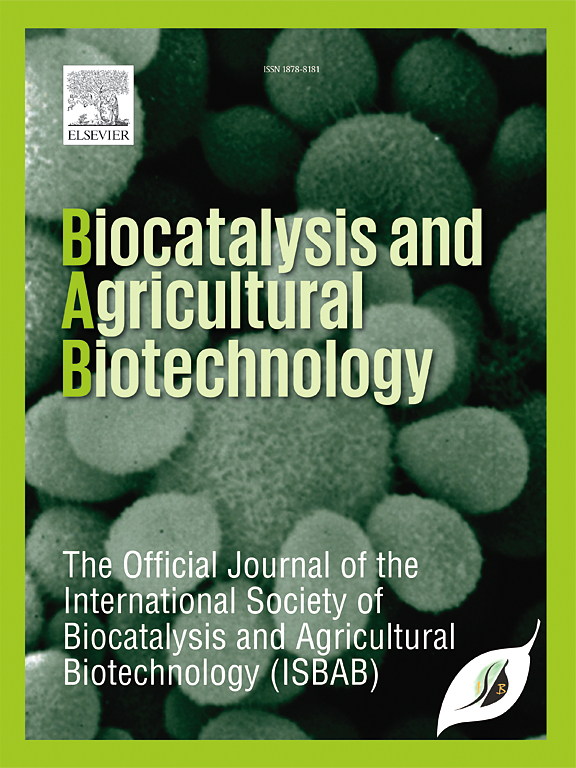Determination of black soldier fly (Hermetia illucens L.) growth and nutrition on food waste and bovine blood mixture as a feedstock
IF 3.4
Q2 BIOTECHNOLOGY & APPLIED MICROBIOLOGY
引用次数: 0
Abstract
Bovine blood is considered one of the major biowastes in a slaughterhouse that contains high nutrition that can be recycled and utilized, especially protein. However, the current treatment to address the issue of bovine blood was confronted with a pressing issue: environmental pollution and cost effectivity. Therefore, it is necessary to convert bovine blood into a high-value form using a bioreactor. Black soldier fly offers a wide range of bioconverting solutions that have the potential to convert bovine blood into a high-value and more acceptable protein source. However, little is known about the growth and nutritional content of black soldier fly larvae fed with bovine blood as their feedstock constituent. Here we show the life span, survival rate, growth rate, waste reduction index, and feed conversion efficiency of black soldier fly larvae fed with bovine blood as feedstock. In a controlled environment, 20 % bovine blood treatment achieved the highest growth rate and protein content. The study's results suggest that black soldier fly larvae, when combined with food waste, can bioconvert bovine blood, resulting in a significant final larval weight and high protein content. The resulting prepupal and pupae hold potential as nutritionally valuable feed for poultry and fish.
确定黑兵蝇(Hermetia illucens L.)在厨余垃圾和牛血混合物作为原料上的生长和营养状况
牛血被认为是屠宰场的主要生物废物之一,它含有可回收利用的高营养,尤其是蛋白质。然而,目前处理牛血液问题的方法面临着一个紧迫的问题:环境污染和成本效益。因此,有必要使用生物反应器将牛血液转化为高价值形式。黑兵蝇提供了广泛的生物转化解决方案,有可能将牛血液转化为高价值和更可接受的蛋白质来源。然而,对以牛血为饲料成分的黑虻幼虫的生长和营养成分了解甚少。以牛血为饲料,对黑兵蝇幼虫的寿命、存活率、生长率、减废指数和饲料转化效率进行了研究。在受控环境中,20%的牛血液处理达到了最高的生长率和蛋白质含量。研究结果表明,黑兵蝇幼虫与食物垃圾结合后,可以生物转化牛血液,从而产生显著的最终幼虫重量和高蛋白含量。由此产生的前蛹和蛹有潜力作为家禽和鱼类的营养价值饲料。
本文章由计算机程序翻译,如有差异,请以英文原文为准。
求助全文
约1分钟内获得全文
求助全文
来源期刊

Biocatalysis and agricultural biotechnology
Agricultural and Biological Sciences-Agronomy and Crop Science
CiteScore
7.70
自引率
2.50%
发文量
308
审稿时长
48 days
期刊介绍:
Biocatalysis and Agricultural Biotechnology is the official journal of the International Society of Biocatalysis and Agricultural Biotechnology (ISBAB). The journal publishes high quality articles especially in the science and technology of biocatalysis, bioprocesses, agricultural biotechnology, biomedical biotechnology, and, if appropriate, from other related areas of biotechnology. The journal will publish peer-reviewed basic and applied research papers, authoritative reviews, and feature articles. The scope of the journal encompasses the research, industrial, and commercial aspects of biotechnology, including the areas of: biocatalysis; bioprocesses; food and agriculture; genetic engineering; molecular biology; healthcare and pharmaceuticals; biofuels; genomics; nanotechnology; environment and biodiversity; and bioremediation.
 求助内容:
求助内容: 应助结果提醒方式:
应助结果提醒方式:


